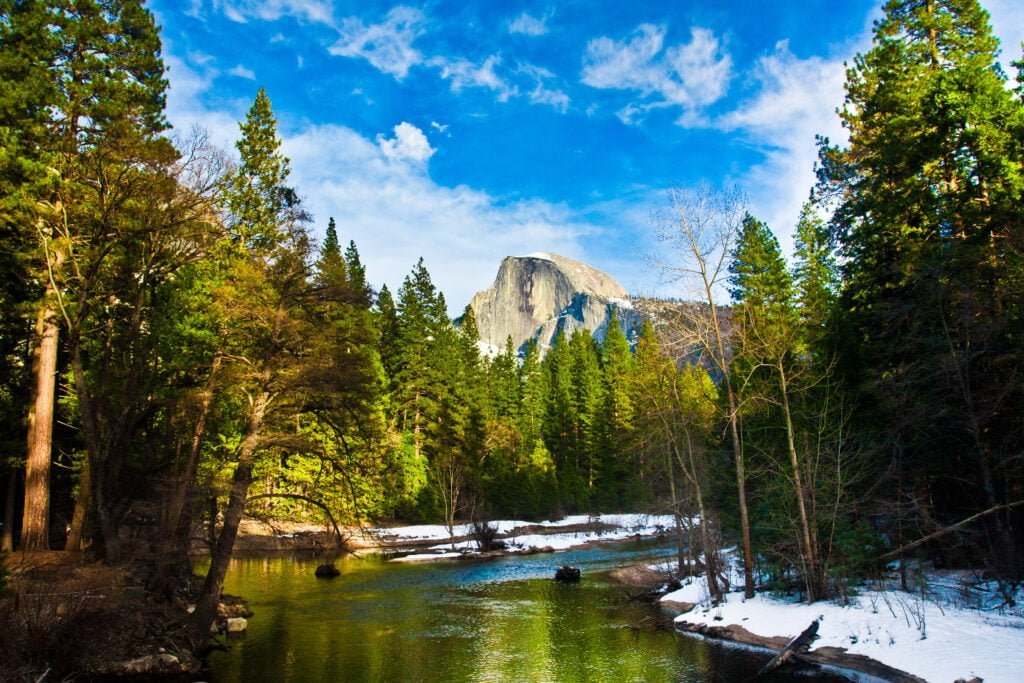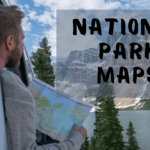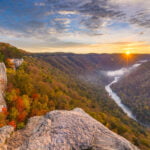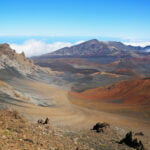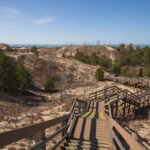Yosemite National Park
Welcome to Yosemite National Park, located in California’s Sierra Nevada mountains. Covering 1,200 square miles, Yosemite is a paradise for those who love the outdoors and are eager to dive into its stunning landscapes and peaceful ambiance. Since its establishment in 1890, Yosemite has become one of America’s most cherished national parks, known for its rich history, diverse ecosystems, and remarkable geological formations.
Yosemite is dedicated to preserving its breathtaking scenery, diverse plant and animal life, while also offering a wealth of recreational and educational opportunities for visitors. Whether you’re into hiking, rock climbing, observing wildlife, or capturing the beauty of nature through photography, Yosemite has something for everyone.
The park is famous for its iconic landmarks, such as the majestic El Capitan and Half Dome rock formations, the ancient sequoias of Mariposa Grove, and the awe-inspiring Yosemite and Bridalveil Falls. Beyond these well-known sites, Yosemite’s high country offers alpine meadows and crystal-clear lakes for those looking to venture into less-traveled areas.
Yosemite’s incredible natural beauty, along with its dedication to preserving this wilderness and enhancing visitor experiences, makes it an essential destination for nature lovers. Join us to explore the captivating beauty of Yosemite National Park and make memories that will endure a lifetime.
Location of Yosemite National Park
Yosemite National Park, a true natural wonder, is nestled within the heart of the Sierra Nevada mountain range in the eastern-central part of California. Spanning an impressive 1,200 square miles, the park’s breathtaking landscape is an exquisite blend of soaring granite cliffs, deep valleys, gushing waterfalls, lush meadows, and ancient giant sequoias. A sanctuary for diverse vegetation and wildlife, Yosemite’s ecological diversity is a testament to its unique location.
Directions to Yosemite National Park
Yosemite National Park is located in the Sierra Nevada mountains of California. To get there:
- From Fresno, CA: Take CA-41 North for about 90 miles directly into the park via the South Entrance.
For GPS navigation, use: Yosemite National Park, CA 95389.
Coordinates of Yosemite National Park
- Latitude: 63.0692° N
- Longitude: 151.0070° W
Scenery Yosemite National Park
The park’s geographical setting is divided into five distinct regions: the High Sierra, Yosemite Valley, Mariposa Grove, Hetch Hetchy, and Tuolumne Meadows. Each area boasts distinctive features that contribute to the park’s overall allure. Yosemite Valley is a glacially-carved wonderland, dominated by iconic landmarks such as Half Dome and El Capitan. The High Sierra region is home to stunning alpine landscapes and meandering subalpine meadows, while Mariposa Grove is famed for its incredible concentration of over 500 ancient giant sequoias.
Yosemite’s location has shaped its rich history, as it has been home to Native American tribes for thousands of years and later became a symbol of the American West during the Gold Rush era. The park’s establishment in 1890 marked a turning point in conservation efforts, as it laid the groundwork for the modern national park system.
Yosemite’s diverse landscape offers visitors a myriad of recreational opportunities, ranging from hiking and rock climbing to birdwatching and stargazing. The park’s extensive trail network appeals to adventurers of all skill levels, whether seeking an easy stroll through the meadows or a challenging trek to the summit of Half Dome. Water enthusiasts can enjoy fishing, swimming, or rafting in the pristine rivers and lakes throughout the park. The unique ecology, geological features, and rich history of Yosemite National Park make it an unforgettable destination for outdoor enthusiasts and nature lovers alike.
Yosemite National Park Opening Times
Yosemite National Park is a stunning destination that offers awe-inspiring landscapes and recreational activities year-round. While the park itself is open 24 hours a day, seven days a week, there are some variations in accessibility and hours for certain areas depending on the season.
During the winter months, typically from November through May, some roads and facilities may close due to snow and hazardous weather conditions. This includes Tioga Road and Glacier Point Road beyond the ski area, which are usually closed from the first significant snowfall until late spring. The Mariposa Grove Road is also closed during this period, but visitors can still access the grove via a two-mile hike. These closures help ensure visitor safety and allow for important maintenance work.
Some visitor centers, campgrounds, and lodging options also have reduced hours or seasonal closures, so it’s crucial to check their availability before planning your visit. In addition, certain areas might have temporary closures for wildlife protection, such as nesting peregrine falcons in El Capitan and Glacier Point.
When planning your Yosemite adventure, take these factors into consideration and consult the National Park Service’s website for the most up-to-date information on road conditions and facility hours. This will help ensure a seamless and unforgettable experience in this natural wonderland.
Visitor Centers and Facilities at Yosemite National Park
Yosemite National Park boasts numerous visitor centers and facilities to ensure that your trip to the park is both enjoyable and informative. There are five main visitor centers located throughout the park, each offering unique amenities and services.
The Yosemite Valley Visitor Center, situated in the heart of the park, provides a wealth of information about park activities, weather conditions, and general park information. Here, you’ll find a bookstore, exhibits on the park’s history and geology, and knowledgeable rangers who can assist with any questions you may have. Restrooms are also available at this location.
Another popular visitor center is the Mariposa Grove Welcome Plaza, which is the primary access point to the famous Mariposa Grove of Giant Sequoias. In addition to restrooms and a small gift shop, this facility offers information about the grove and the free shuttle service that transports visitors through the area.
Other visitor centers within the park include the Big Oak Flat Information Station, the Tuolumne Meadows Visitor Center, and the Wawona Visitor Center at Hill’s Studio. These centers provide additional park information, restrooms, and exhibit areas.
Yosemite National Park also offers numerous picnic areas and playgrounds throughout the park, allowing families to enjoy an outdoor meal together while taking in the breathtaking scenery. One possible limitation of the park’s facilities is that they can become quite crowded during peak seasons; therefore, it is wise to plan your visit during weekdays or the shoulder seasons for a more relaxed experience.
To make the most of these facilities, visitors should research each visitor center’s offerings in advance to maximize their visit. Additionally, be sure to utilize the park’s free shuttle service, which connects various areas of the park, including some visitor centers, popular hiking trails, and picnic areas. This will not only save time but also help alleviate traffic within the park, making for a more enjoyable experience for all visitors.
Accessibility at Yosemite National Park
Yosemite National Park strives to create an inclusive experience for all visitors, including those with disabilities or mobility challenges. To ensure accessibility, the park offers a range of facilities and services designed to accommodate various needs.
Visitors can explore numerous accessible trails and pathways throughout the park, including the Yosemite Valley Loop Trail, Lower Yosemite Falls Trail, and Glacier Point Trail. These trails offer smooth, level surfaces and scenic views of the park’s iconic landmarks, including waterfalls, granite cliffs, and meadows.
Several viewpoints and overlooks, such as Tunnel View, Glacier Point, and Mariposa Grove, also have accessible viewing areas, ensuring that everyone can take in the breathtaking beauty of Yosemite. In addition, accessible restrooms, picnic areas, and campgrounds are located throughout the park for the convenience of visitors with mobility challenges.
For those requiring additional assistance, Yosemite offers wheelchair rentals, accessible shuttle services, and designated parking areas. Service animals are also welcome throughout the park. Park rangers and staff are available to provide information and guidance on accessible features and activities.
However, it’s worth noting that some areas of the park may present challenges for visitors with accessibility needs, including steep or uneven terrain and narrow trails. In these cases, it’s recommended to consult with park staff or refer to the Yosemite Accessibility Guide for detailed information and alternative options to ensure a safe and enjoyable visit for everyone.
Getting To Yosemite National Park
To explore the breathtaking beauty of Yosemite National Park, visitors have multiple options for their mode of transportation. The closest airport to the park is Fresno Yosemite International Airport (FAT), approximately 65 miles away. From there, one can rent a car and drive to the park or use public transportation services like the Yosemite Area Regional Transportation System (YARTS) that offers regular routes from nearby towns, including Merced, Mammoth Lakes, Sonora, and Fresno.
For those who prefer to drive, the park has four main entrances: Highway 120 from the west (Big Oak Flat entrance), Highway 140 (El Portal entrance), Highway 120 from the east (Tioga Pass entrance, closed during winter), and Highway 41 (South entrance, near Oakhurst). Keep in mind that winter weather conditions may lead to temporary road closures.
Several nearby towns and cities, such as Mariposa, Groveland, and Lee Vining, offer lodging options and are within driving distance of the park. Parking inside Yosemite National Park is available at various locations, including Yosemite Village, Curry Village, and Yosemite Valley Lodge. A $35 fee per vehicle is required for a seven-day pass to the park. During peak times, such as weekends and holidays, parking can be limited, so it is advised to arrive early or utilize the park’s free shuttle service to avoid the hassle of finding a parking space.
Yosemite National Park Entrance Fees and Passes
Entering the pristine wilderness of Yosemite National Park comes with some necessary fees and permits, designed to help preserve and maintain the park for all visitors. To begin your adventure, you’ll need to pay an entrance fee, which varies depending on your mode of transportation. For private vehicles, the cost is $35, while motorcyclists pay $30. Individual visitors entering by foot, bicycle, or park shuttle pay $20 each. These fees cover unlimited entry for seven consecutive days.
For frequent visitors or those planning to explore multiple national parks, the America the Beautiful Pass is a wise investment, costing $80 annually and granting access to over 2,000 federal recreation sites, including Yosemite. Senior citizens and military personnel can obtain discounted passes, while 4th-grade students can get free annual passes through the Every Kid Outdoors program.
In addition to entrance fees, some park activities, such as overnight camping and wilderness permits, may require additional reservations and fees. It’s essential to book these in advance, as they tend to fill up quickly, especially during peak season.
Revenue generated from entrance fees and permits helps fund essential park projects like maintaining trails, protecting wildlife habitats, and enhancing visitor experiences. While the costs may seem daunting at first, investing in these fees and passes contributes to Yosemite’s preservation, ensuring that its natural wonders remain accessible and awe-inspiring for generations to come. However, keep in mind that the annual passes may not cover additional fees for specific activities or amenities, such as camping or guided tours, within the park.
Yosemite National Park Park Rules and Regulations
At Yosemite National Park, it is essential for visitors to adhere to park rules and regulations to ensure the preservation of the park’s natural environment and the well-being of both visitors and wildlife. One of the most fundamental principles for responsible behavior is to leave no trace. Make sure to carry out all trash, stay on designated trails, and avoid picking plants or disturbing wildlife.
Feeding animals is strictly prohibited, as it can cause them to lose their fear of humans and become aggressive. If you encounter wildlife, always maintain a safe distance and never approach or attempt to touch them. Pets are allowed only in specific areas and must always be kept on a leash not exceeding 6 feet in length.
Campfires are allowed only in designated fire rings within campgrounds. Make sure to fully extinguish any fires before leaving. Wildfires pose a significant risk to the park, so be cautious and follow all posted fire restrictions.
Parking and camping are allowed only in designated areas, and camping is limited to a maximum of 30 days per calendar year. Noise should be kept to a minimum, especially during quiet hours from 10 p.m. to 6 a.m.
Some common violations include entering closed areas, shortcutting switchbacks on trails, and possessing or using drones. These actions can lead to fines, park eviction, and even criminal charges. Remember, being a responsible park visitor not only ensures the protection and preservation of Yosemite National Park but also contributes to a safe and enjoyable experience for all.
Transportation Within Yosemite National Park
Transportation in Yosemite National Park presents a variety of options tailored to enhance visitors’ experiences while minimizing environmental impact. One popular choice is the free shuttle bus system, which operates in Yosemite Valley and Mariposa Grove, reducing traffic congestion and emissions. It is wheelchair accessible and allows easy exploration of key attractions like Yosemite Falls and Glacier Point.
For a scenic and sustainable experience, consider renting a bicycle or joining a guided bike tour. Many paved paths wind through the valley, offering unparalleled views of iconic landmarks like Half Dome and El Capitan. However, be aware that steep inclines and limited accessibility to certain areas may pose challenges for some visitors.
Private vehicles are allowed but may face parking limitations, particularly during peak seasons. Carpooling or using electric vehicles helps mitigate environmental impact. Additionally, park-and-ride lots are available to minimize congestion.
For extended exploration, the Yosemite Area Regional Transportation System (YARTS) offers affordable, comfortable bus services connecting key park areas and nearby towns. This is an excellent option for visitors seeking convenience and accessibility without sacrificing sustainability.
Ultimately, Yosemite’s transportation options cater to diverse visitor needs, allowing you to choose the best mode of transport based on your interests, abilities, and environmental consciousness.
Yosemite National Park Attractions
1. Yosemite Valley: The heart of the park, Yosemite Valley is home to iconic landmarks, such as Half Dome and El Capitan. Its stunning beauty captivates visitors with lush meadows, thundering waterfalls, and towering granite cliffs. Spring and early summer are ideal times to visit when the waterfalls are at their peak flow. Take a leisurely stroll or bike ride along the valley floor, and don’t miss the Tunnel View lookout for a picture-perfect panorama.
2. Mariposa Grove: As the largest grove of Giant Sequoias in Yosemite, Mariposa Grove is a must-visit destination. These ancient trees, some over 3,000 years old, are awe-inspiring in their size and endurance. The grove reopens in spring, after winter road closures, making it an ideal time to visit. Be sure to check out the famous Grizzly Giant and California Tunnel Tree during your visit.
3. Glacier Point: For breathtaking, panoramic views of Yosemite Valley, Glacier Point is the place to be. This incredible vantage point offers an unparalleled perspective of Half Dome, Vernal and Nevada Falls, and the surrounding high country. The road to Glacier Point is typically open from late May to November, with summer being an excellent time to visit for clear views. Sunset at Glacier Point is a magical experience you won’t soon forget.
4. Tuolumne Meadows: This picturesque subalpine meadow is a serene escape from the valley’s crowds. Surrounded by rugged mountain peaks, it’s a perfect spot for hiking, picnicking, or birdwatching. The meadow is accessible from late spring to early fall, with summer being the best time to visit for pleasant weather and vibrant wildflower displays. A leisurely stroll along the Tuolumne River is a relaxing way to experience this tranquil haven.
5. Mist Trail: This exhilarating hike takes you up close and personal with two of Yosemite’s most impressive waterfalls – Vernal and Nevada Falls. Prepare to be misted by the powerful waterfalls as you ascend the steep, granite steps. Spring and early summer are the best times to visit for maximum waterfall flow, but be aware that the trail can be slippery due to the mist. My most memorable hike on the Mist Trail was a late-spring trek where the thundering waterfalls, vibrant rainbows, and lush surroundings created an unforgettable experience.
Yosemite National Park offers a diverse array of attractions for all visitors. No matter the season, prepare to be amazed and inspired by the natural wonders that await you.
Recreational Activities at Yosemite National Park
Yosemite National Park offers a plethora of recreational activities that cater to visitors with diverse interests and fitness levels. The park’s stunning natural beauty and varied terrain provide an ideal playground for numerous outdoor pursuits.
Trails and Hiking: Yosemite’s extensive network of over 800 miles of trails is a hiker’s paradise. From leisurely walks to challenging backcountry expeditions, there is a trail to suit everyone. For beginners, the Mariposa Grove and Lower Yosemite Falls trails are accessible and family-friendly. More experienced hikers can tackle the iconic Half Dome trail or the strenuous Clouds Rest hike. Permits are required for specific trails like Half Dome, so be sure to check the park’s website for details. Consider appropriate footwear, pack plenty of water, and adhere to the Leave No Trace principles.
Climbing: Yosemite is a world-renowned climbing destination, and the legendary El Capitan and Half Dome formations attract climbers from around the globe. Climbing in Yosemite caters to various skill levels, from bouldering in Camp 4 to tackling multi-pitch routes on the granite walls. Check for seasonal closures due to nesting birds and obtain a wilderness permit for overnight climbs.
Cycling: Biking is an excellent way to explore Yosemite Valley while minimizing your environmental impact. The park boasts over 12 miles of paved bike paths, taking in scenic spots like Mirror Lake and Yosemite Falls. Bring your bicycle or rent one from the Yosemite Valley Lodge. Helmets are mandatory for children under 18, and cyclists should remain on designated paths.
Ranger Programs: Yosemite’s knowledgeable rangers offer a range of educational programs, including nature walks, campfire talks, and stargazing sessions. These activities are an excellent way to learn about the park’s history, geology, and wildlife. Most ranger-led programs are free and suitable for all ages.
Guided Tours: For an in-depth and personalized experience, consider booking a guided tour. Park concessionaires offer various options, including photography workshops, bird-watching tours, and snowshoeing excursions, depending on the season. Fees and reservations apply.
Other Activities: Yosemite’s offerings extend beyond hiking and climbing. Enjoy horseback riding, fishing, and bird-watching in the warmer months, or snowshoeing and skiing in the winter at Badger Pass Ski Area. Permits and licenses may be required for specific activities like fishing and wilderness camping.
In conclusion, Yosemite National Park boasts a diverse array of recreational activities, from adrenaline-pumping climbs to leisurely nature walks. The park caters to visitors of all interests and fitness levels, ensuring a memorable and enriching experience. Remember to plan ahead, respect the park’s rules, and prioritize safety when enjoying these stunning surroundings.
Best Times to Visit Yosemite National Park
Yosemite National Park, a majestic destination spanning nearly 1,200 square miles, offers awe-inspiring sceneries and adventures throughout the year. However, the ideal time to visit the park varies depending on your preferences and priorities.
Spring (March-May) is a great time to witness the park’s waterfalls at their fullest, thanks to the melting snow. Warmer temperatures and blooming wildflowers make it a delightful time for hiking. The downside is that the higher elevation trails, such as Tioga Road and Glacier Point Road, may still be closed due to snow.
Summer (June-August) is the most popular season, with all park facilities and trails accessible. The warm weather is perfect for camping, hiking, and rock climbing. However, the park can be crowded, and accommodations tend to fill up quickly. If you’re a wildlife enthusiast, this season offers a higher chance of spotting bears, deer, and other animals.
Fall (September-November) brings cooler temperatures, vibrant foliage, and fewer crowds, making it an excellent time for leisurely exploration. However, some facilities may have reduced hours, and waterfalls may not be as impressive due to lower water levels. Wildlife sightings, particularly of bears, remain high during this season.
Winter (December-February) transforms Yosemite into a snow-covered wonderland, providing opportunities for skiing, snowshoeing, and ice-skating. The park is much less crowded, and accommodations are easier to find. However, some roads and facilities may be closed, and the weather can be unpredictable, with occasional snowstorms and road closures.
In conclusion, there’s no definitive best time to visit Yosemite National Park, as each season boasts unique experiences. If you’re seeking minimal crowds and comfortable temperatures, spring and fall are ideal. Summer is perfect for outdoor enthusiasts, while winter offers a serene, snow-filled landscape. Prioritize your preferences and plan accordingly to make the most out of your Yosemite adventure.
Nearby Attractions to Yosemite National Park
Yosemite National Park, a true natural wonder, has numerous attractions and activities to offer its visitors. Apart from the park’s captivating landscapes, waterfalls, and wildlife, there are several nearby attractions worth exploring to fully immerse oneself in the region’s beauty and history.
1. Mariposa Grove: Located just 35 miles south of Yosemite Valley, Mariposa Grove is home to over 500 mature giant sequoias, including the renowned Grizzly Giant and the California Tunnel Tree. A visit to this remarkable grove offers an unforgettable experience as you walk among some of the oldest and largest living organisms on Earth. The grove is open year-round, but the shuttle service operates only from late spring to early fall. There is no additional fee to enter Mariposa Grove, but you will have to pay the standard park entrance fee.
2. Mono Lake: About 60 miles east of Yosemite, Mono Lake is a unique saline-soda lake known for its limestone tufa towers and diverse bird population, making it a popular spot for birdwatching and photography. Mono Lake is open year-round, but some access roads may be closed during winter. Entry to the lake is free, but there is a small fee to visit the Mono Lake Tufa State Natural Reserve.
3. Ansel Adams Gallery: For art and photography enthusiasts, the Ansel Adams Gallery in Yosemite Valley is a must-visit. The gallery showcases the works of the legendary photographer Ansel Adams, who captured the park’s breathtaking landscapes. The gallery is open daily (except for certain holidays) and admission is free.
Including these attractions in your visit to Yosemite National Park adds depth and variety to your experience. However, visiting these additional sites may require extra time and transportation, which might not be convenient for those with tight schedules. Moreover, some attractions may have limited access during certain seasons, so planning ahead is crucial to ensure a smooth and enjoyable trip.
Tips for Visiting Yosemite National Park
Embarking on a journey to the breathtaking Yosemite National Park is an adventure that promises unforgettable experiences and awe-inspiring views. To make the most of your visit, consider these helpful tips:
1. Best time to visit: Yosemite is a year-round destination, but the optimal time to visit largely depends on your preferred activities. Spring (April-May) is perfect for witnessing gushing waterfalls and blooming wildflowers, while summer (June-August) offers the best weather for hiking and camping. Autumn (September-October) provides a respite from the crowds and showcases vibrant fall colors, while winter (November-March) is ideal for skiing and snowshoeing at the park’s Badger Pass Ski Area.
2. What to pack: Dressing in layers is key, as temperatures can vary dramatically throughout the park. Bring a waterproof jacket, sturdy hiking shoes, sun protection, and a reusable water bottle. Don’t forget binoculars for wildlife spotting and a portable charger for your electronic devices.
3. Photography tips: Capture the park’s splendor with a mix of wide-angle shots for grand landscapes and telephoto lenses for close-ups of wildlife and intricate details. Arrive early or stay late to catch the golden hues of sunrise and sunset, and experiment with different perspectives by hiking to various viewpoints.
4. Safety precautions: Stay on designated trails, respect wildlife from a safe distance, and practice Leave No Trace principles. If you plan to hike, inform someone of your itinerary and carry a map, compass, and fully charged phone.
5. Potential hazards: Be aware of altitude sickness, unpredictable weather changes, and slippery trails near waterfalls. In addition, exercise caution on busy roads and crowded parking lots, especially during peak seasons.
6. Recommended itineraries: First-time visitors can explore Yosemite Valley’s iconic sites, such as Tunnel View, Yosemite Falls, and Half Dome, while experienced adventurers may opt for backcountry excursions to lesser-known gems like Hetch Hetchy Reservoir or the High Sierra Camps Loop. Families will enjoy ranger-led programs, the Ansel Adams Gallery, and easy strolls through meadows and groves.
By heeding these suggestions, you’ll be well-equipped to have an unforgettable visit to Yosemite National Park and make memories that will last a lifetime.
Camping and Lodging at Yosemite National Park
Yosemite National Park offers a plethora of accommodation options to suit every traveler’s preferences, budget, and group size. Ranging from rustic campgrounds to upscale hotels and lodges, visitors are sure to find a comfortable place to rest after a day of exploring the park’s breathtaking sights.
For those who prefer to be close to nature, Yosemite has 13 campgrounds scattered throughout the park, with some sites available for reservation and others available on a first-come, first-served basis. Campgrounds provide basic amenities like picnic tables, fire rings, and restrooms. Prices are generally reasonable, ranging from $6 to $26 per night, making this an affordable option for budget-conscious travelers.
If you’re looking for a more comfortable and convenient experience, consider staying at one of Yosemite’s lodges or hotels. Yosemite Valley Lodge is a popular choice, located close to the iconic Yosemite Falls. It offers modern rooms, a restaurant, and an outdoor pool. Prices vary depending on the season, but expect to pay upwards of $200 per night.
For a unique and historic experience, The Ahwahnee Hotel is an excellent option. This upscale, luxurious hotel features stunning architecture, fine dining, and spectacular views of surrounding cliffs and waterfalls. However, this level of luxury comes with a higher price tag, with rooms starting around $400 per night.
Outside the park boundaries, there are numerous hotels, inns, and vacation rentals in nearby towns such as Mariposa, El Portal, and Oakhurst. Staying outside the park means less crowded surroundings and often better availability, but it also means a longer drive to access the park’s attractions.
When booking accommodations, it is essential to plan well in advance, as many lodging options fill up quickly, especially during the peak summer months. Reservations can be made through Yosemite’s website or by contacting the individual lodging providers.
In conclusion, Yosemite National Park offers a wide variety of accommodations to cater to different visitor preferences and budgets. Whether you prefer the rustic charm of campgrounds or the luxury and comfort of upscale hotels, you’ll find the perfect place to rest and recharge during your Yosemite adventure.
Food and Dining Options Yosemite National Park
Yosemite National Park offers a delightful array of food and dining options that cater to various tastes, dietary preferences, and budgets. Within the park boundaries, visitors can indulge in a range of culinary experiences from casual cafes and grocery stores to elegant dining establishments.
For a quick bite or a casual meal, stop by the Yosemite Valley Lodge food court, or the Curry Village Pavilion, both of which serve a variety of sandwiches, salads, and pizzas at a reasonable price. For a more refined dining experience, the Majestic Yosemite Hotel Dining Room is a must-visit, offering a sumptuous menu with options like bison steaks and sustainable seafood. Keep in mind, though, that this up-scale restaurant might require a reservation and has a dress code.
If you prefer to dine amidst nature, the park has numerous picnicking spots where you can enjoy a meal with picturesque views. Stock up on supplies at the Yosemite Valley Village Store or the Crane Flat Gas Station, both of which offer groceries and ready-made snacks.
In the nearby town of Mariposa, you can find even more dining options, ranging from home-style American fare to international cuisine, such as Charles Street Dinner House and 1850 Restaurant & Brewery. For vegetarian and vegan visitors, the Happy Burger Diner and Sugar Pine Cafe offer satisfying plant-based meals. With this array of choices, Yosemite truly has something to please every palate, whether you’re looking for a quick, affordable meal or an unforgettable fine dining experience.
Visitor Numebers Yosemite National Park
Yosemite National Park, one of America’s most iconic natural landscapes, has experienced a significant increase in visitor numbers over the past decades. In recent years, the park has welcomed over 4 million guests annually, with peak visitation occurring during the summer months of June, July, and August. During this time, the park can become quite crowded, with congestion at popular attractions and limited availability of accommodations.
Various factors affect these trends, such as weather conditions, school holidays, and promotional campaigns. Consequently, park management faces challenges in ensuring visitor safety, maintaining infrastructure, and protecting the park’s fragile ecosystem. As a result, Yosemite has implemented measures to alleviate congestion during peak times, such as implementing day-use reservation systems during the busiest months.
To enhance your experience at Yosemite and contribute to conservation efforts, consider visiting during the shoulder seasons of late spring and early autumn. During these periods, you can still enjoy pleasant weather and witness the park’s natural beauty with fewer crowds. Additionally, plan your daily activities for early mornings or late afternoons, when popular attractions are less busy. Regardless of when you choose to visit, make the most of your time by exploring lesser-known areas of the park and participating in ranger-led programs or educational activities. By doing so, you will not only deepen your appreciation for Yosemite but also contribute to the long-term sustainability of this cherished national treasure.
History and Background of Yosemite National Park
Yosemite National Park, situated in the heart of California’s Sierra Nevada mountain range, is a testament to the awe-inspiring power of nature and the perseverance of human conservation efforts. Established in 1890, it spans over 1,200 square miles and boasts natural wonders such as the iconic Half Dome, El Capitan, and the majestic Mariposa Grove of Giant Sequoias.
The park’s history can be traced back thousands of years to its first indigenous inhabitants, the Ahwahneechee tribe. In the mid-19th century, European-American explorers, led by Joseph Walker, arrived in the region, paving the way for the California Gold Rush. It was during this period that the park’s breathtaking beauty was first made known to the wider world.
One of the most influential figures in Yosemite’s history was famed naturalist John Muir. His tireless advocacy for the protection of the area’s unique landscape and ecosystem played a crucial role in the establishment of Yosemite as a national park. Another significant figure was Galen Clark, who was appointed as the park’s first guardian in 1866 and was instrumental in the park’s ongoing preservation.
Today, Yosemite National Park continues to be a symbol of the importance of conservation and is home to numerous ongoing preservation and restoration projects. These efforts aim to maintain and protect the park’s rich biodiversity, which includes more than 400 species of vertebrates and over 1,200 species of plants. Moreover, Yosemite plays a vital role in educating visitors about the importance of environmental stewardship and responsible tourism.
In conclusion, Yosemite National Park stands as a shining example of the balance between natural splendor and human intervention. Its rich history, stunning landscape, and ongoing conservation efforts make it an essential destination for those seeking to understand and appreciate the true beauty of the natural world.
Flora and Fauna at Yosemite National Park
Yosemite National Park is a natural wonderland teeming with a diverse range of wildlife and plant species. The park covers an area of over 1,100 square miles and encompasses various ecosystems, from lush valleys and meadows to towering mountain ranges and ancient sequoia groves. As you explore the park, you’ll encounter a vast array of flora and fauna that make Yosemite an incredibly unique and rich environment.
The park is home to over 400 species of vertebrates, including mammals, birds, reptiles, and amphibians. Some of the most iconic animals that roam Yosemite’s wilderness are the American black bear, mule deer, bobcat, and the elusive mountain lion. Birdwatchers will be delighted to spot over 260 species of birds, such as the peregrine falcon, California spotted owl, and Steller’s jay.
Yosemite’s plant life is just as diverse, boasting over 1,450 native plant species. The park is famous for its immense sequoia trees, some of which are over 3,000 years old and among the largest living organisms on the planet. Other notable flora includes vibrant wildflowers like lupines and California poppies, as well as a variety of ferns, mosses, and lichens.
To observe and enjoy Yosemite’s wildlife and plant life responsibly and safely, it’s essential to maintain a respectful distance from animals – at least 100 yards from bears and 25 yards from other wildlife. Never feed or approach any animals, as it can be harmful to both you and them. Stay on designated trails to avoid trampling delicate vegetation, and always follow the park’s leave-no-trace principles to protect Yosemite’s unique ecosystems.
When visiting Yosemite National Park, take the time to immerse yourself in its incredible biodiversity. Keep your eyes open and your camera ready, and you’ll be rewarded with unforgettable encounters with the park’s captivating flora and fauna.

